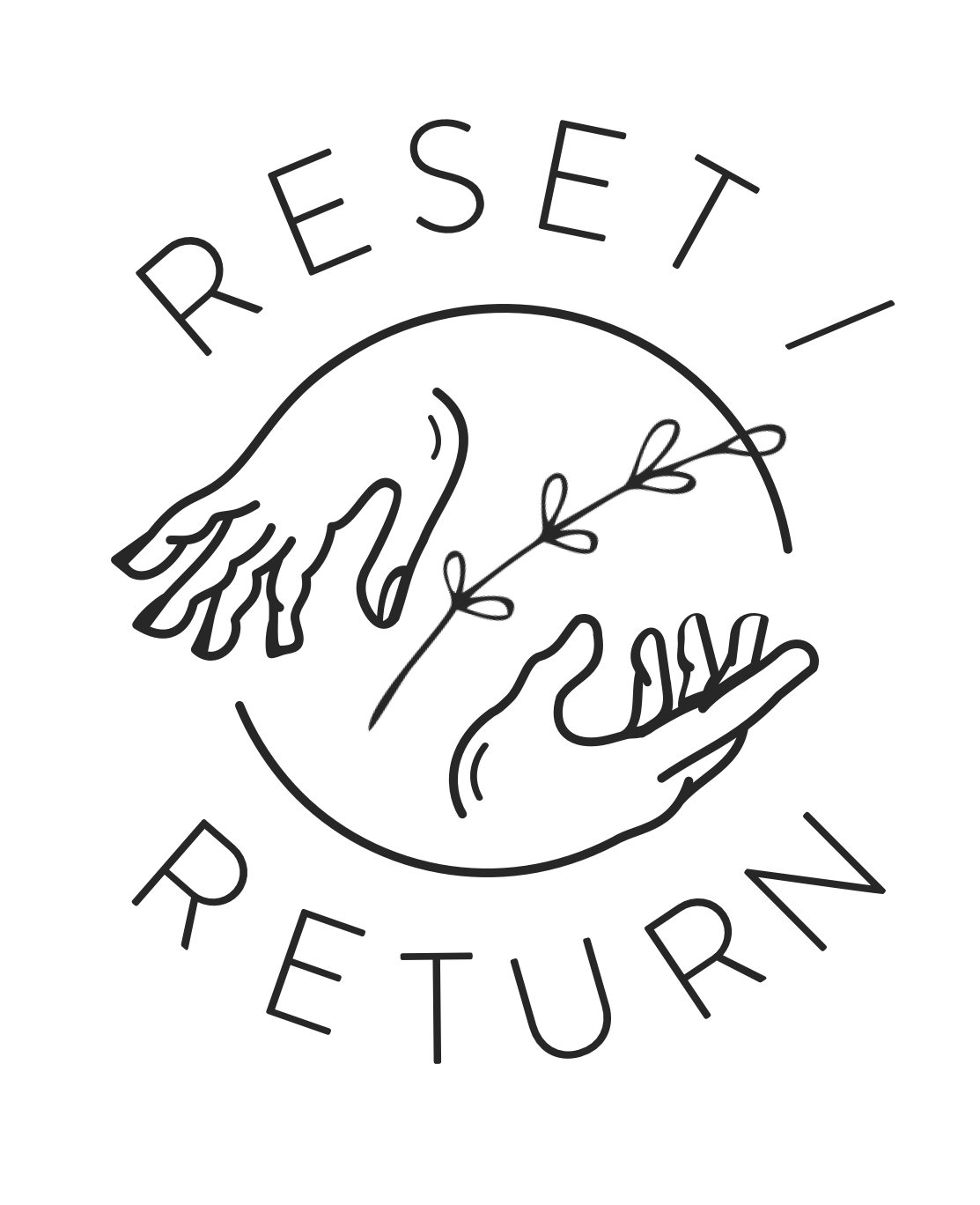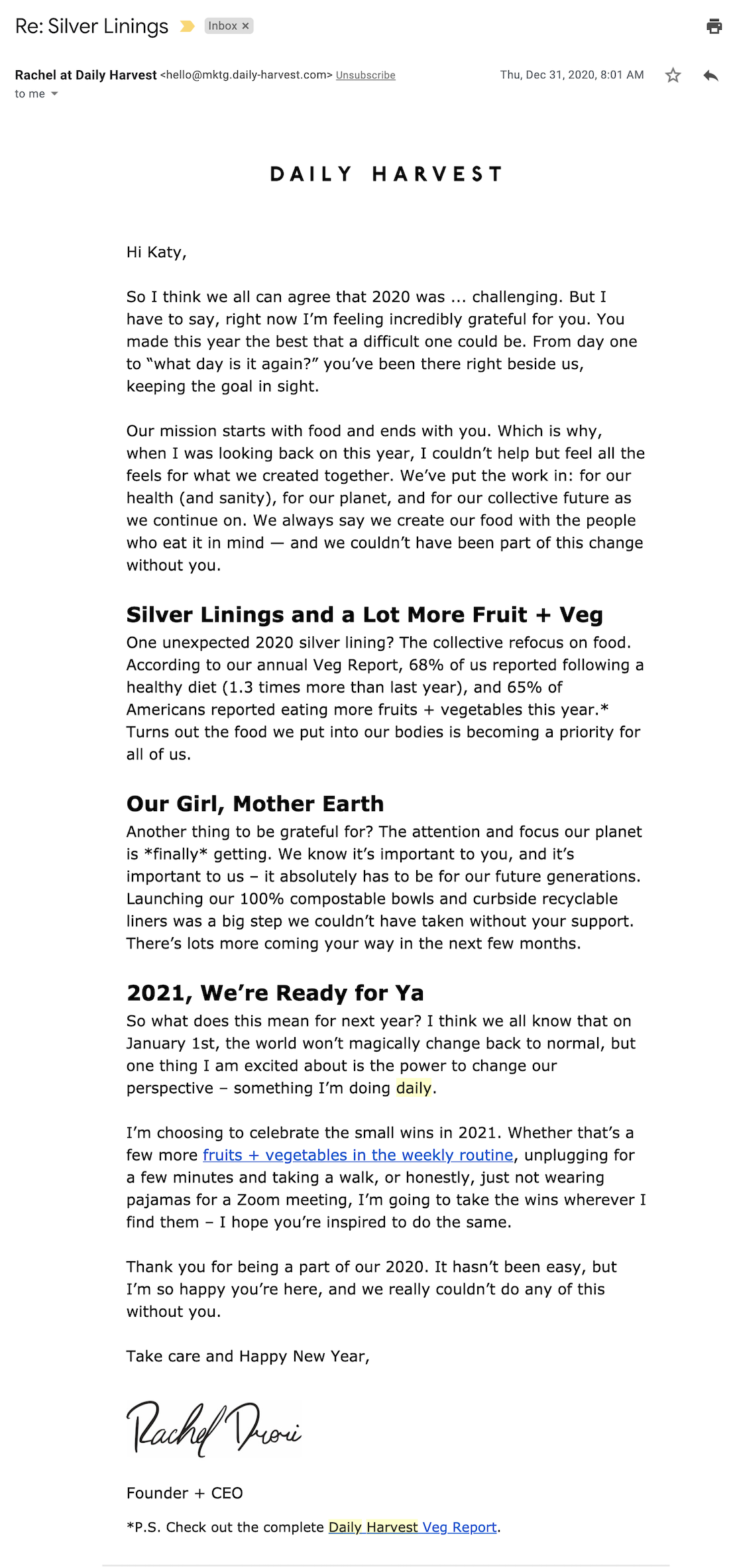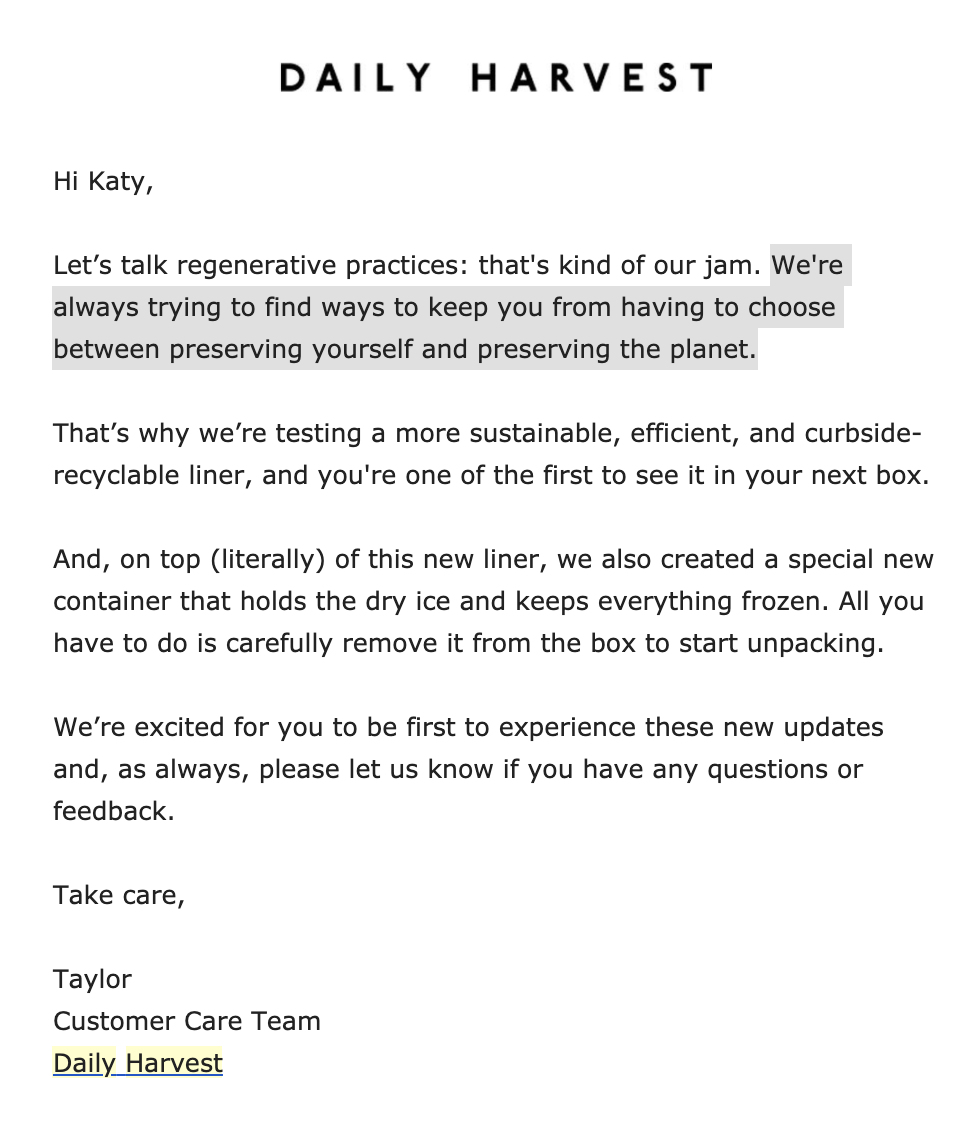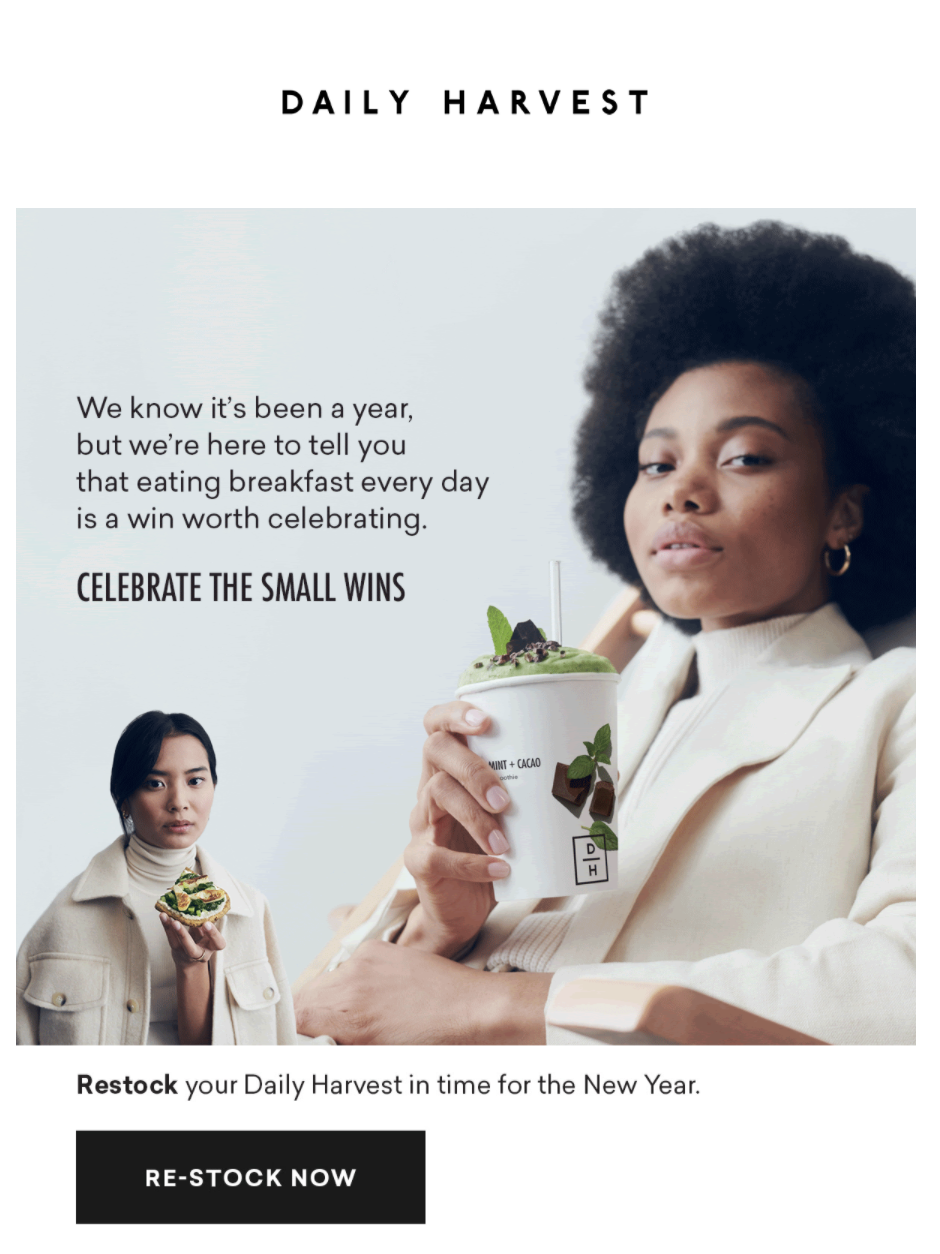Pastel on paper by Katy Ward
There’s one common breakdown I see with every brand I work with.
The team is lit about their product or service…
but the customers get a watered-down dose of that passion at best.
Why does this happen?
Think about it – every conversation you have with a company founder, you feel their enthusiasm. When you talk to their team, you get a 2nd-degree dose of that same passion. As a customer, it’s more than “3º of separation”… there are dozens and dozens of touchpoints that aren’t even with a human, and many of them end up feeling transactional.
Oftentimes the website, emails, talks, and ads have the same words the team says to each other on Zoom calls. It’s a lot of extra information and inside language, and it doesn’t grab a new person’s attention.
So then you have a pickle. 🥒 How do we move and amp up our customers?
Here’s how to do it, step by step.
1. Realize people don’t care about your product or brand. They care about their own problems
I’m working with a company that represents indigenous New Mexico jewelry craftsmen and local Albuquerque artists. Their team is so passionate, and they’ve led the way in stewarding fair trade, Native American, and local craft without appropriation.
As cool as that is, their e-commerce customers don’t care about any of that when they’re looking for jewelry. They want high quality, stylish pieces. The cultural stewardship and impact of the brand is a secondary benefit. If they talk about it first, they won’t get anyone’s attention.
Always lead with the main problem you solve. And say it so it 5th grader could understand it.
2. Find the juice of their customer journey: The 💫transformation 💫 your product or service creates
When I first moved to California, I had a dream to run my own remote, travel-friendly consulting business. I hoped never to take a typical desk job, and I was set on working with social and environmental impact companies.
The more I started to freelance and make connections in San Diego, the more I took meetings. I needed a grown-up work bag.
Dilemma. Work bags go with suits and sorry-you-have-to-sit-at-a-desk-for-8-hours rolly chairs. A briefcase or satchel or even a pretty tote would make it harder to see myself achieving my aspirations.
Then I found a structured vegan leather backpack. When I saw it, I thought of Lara Croft scaling a temple in Thailand. It didn’t look like a school bag, but it didn’t look stuffy either. It was PERFECT.
The value of the aspiration was more than the value of the bag. I would’ve paid $300 for that thing. The transformation the product carried was from a desk-doomed intern to a badass business-owning adventurer.
When you show your customer an affirming new identity, your product becomes a symbol of that identity.
3. Distill these 2 key message elements: the clear message about what you do, and the transformation it helps them experience
Okay, this is the tricky part.
It’s not just important to say what you sell and the problem (1 problem) it solves, it’s critically important to say it as simply as possible.
That simple ‘what we do’ is the first touch point around your brand. When you can distill it to 1-2 sentences that everyone memorizes, you’re able to earn people’s attention on a first impression.
For example:
- T.Skies hand-crafts silver and gold jewelry with a minimal, southwestern style.
- Katy writes websites and marketing for social impact businesses.
John Tyson for Unsplash
Photo by Jena Willard of me wearing T.Skies jewelry
To give a fuller story for your one liner, you can frame it as follows:
- Most people want (what your customer wants) but they struggle with (the problem your product solves)
- We make (product)
- That way, you can (aspiration identity)
For example:
Many women care how their jewelry makes them feel, but they end settling for mass produced pieces.
T.Skies makes handcrafted pieces rooted in New Mexico culture, and benefitting local artists.
That way, women can feel grounded in culture, and styled with the southwest.
This one-liner has both the clear message (they make jewelry) and the feeling of their brand: grounded, intentional, and southwestern.
4. Market to your customers like they’ve already won
This is the fun part – as a brand, business, or voice with an audience, you can completely transform someone’s day by speaking to them as if they are already a winner.
That’s why Nike’s marketing works, and Apple’s. With Nike, you’re a go-getter. With Apple, you’re a genius. You just need the tools to be the go-getter and the genius. The brand is the guide, the customer is the hero.
When you know how your customer can transform, you can help them imagine that new identity by telling them how it looks. That means your social posts say, “You love ___ and you rock it” or “You’re the go-to on the block for ___”. When they sense you’re cheering them on, they associate your product with feeling that fresh new way. And that’s why they buy.
5. Map out every touchpoint your business has with your customers… and how each one makes them feel
This is such a simple step but it’s often overlooked. From the first impression to the last “thank you for unsubscribing” email or step out the door, list every single encounter your customers have with your brand.
How does each step make them feel? How can you over-deliver?
Include their encounters with your current customers. What have you trained the customers to say (they’ll say what they read repeatedly).
United Nations submission for Unsplash
McGill Library for Unsplash
6. Over-deliver the sh*t out of every touchpoint 🎁
A brand personality happens in the details. When you replace transactions with celebrations, encouragements, and inspirations… you leave a distinct impression.
The artisan way to build a business is to improve every touchpoint before you go back to improve the product or service. That’s crafting an experience and a relationship, and it makes lifetime customers.
People recognize experience and intentionality in a brand to the point that they will take on the purpose of the brand themselves. This is how brands can change the culture – by earning the trust and respect of their audience.
7. Write really good emails
Email is not an option at this point.
Every other platform for a business can be shut down without notice – from social media pages to brick and mortar stores. But your email list will survive.
More importantly, email provides the repetition touchpoint that turns your brand into a manifesto or ideology.
What does a really good email have?
- It talks about your customer and the relatable problems they face
- It gets to the point
- It’s from a real person
- It shows that there are real people celebrating over their win
- It shows real ways to have a transformed life – but only with education that is relevant and actionable
- It’s skimmable and visual to respect their time. Add headlines, highlights, images, and bolding so they can get the jist in 8 seconds.
- It has candy – something fun, inspiring, or surprising at the end of each email (think gifs, discounts, team photos, memes, quotes, etc.
- You read it out loud and it doesn’t sound weird. 🤨
Here are a few great examples from my meal delivery company (scroll to see all):
Best tip: I recommend heading to www.mystorybrand.com and filling out the worksheet to make a brand story (a BrandScript). It’s free and each of the 7 steps of your brand story has a quick video to help you write the clearest message possible.
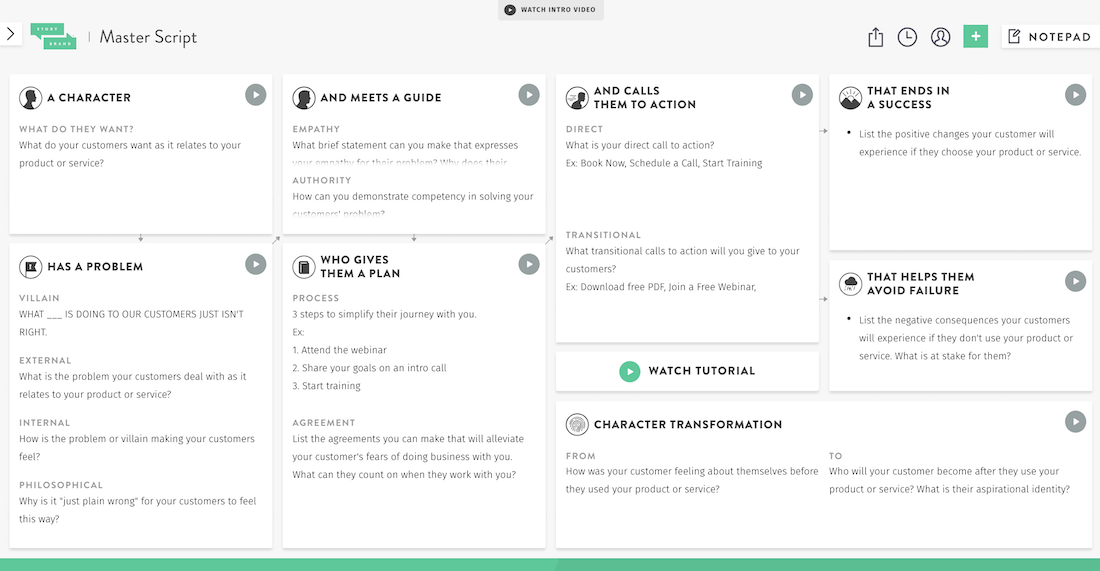
When you turn your brand into a transformation story, you activate the power of influence.
You can use that influence to convert more sales, and equally as important, to transform your customer’s mindset and lifestyle for the better.
Best tip: I recommend heading to www.mystorybrand.com and filling out the worksheet to make a brand story (a BrandScript). It’s free and each of the 7 steps of your brand story has a quick video to help you write the clearest message possible.

When you turn your brand into a transformation story, you activate the power of influence.
You can use that influence to convert more sales, and equally as important, to transform your customer’s mindset and lifestyle for the better.
subscribe for updates
on new posts and curated (good) news.
